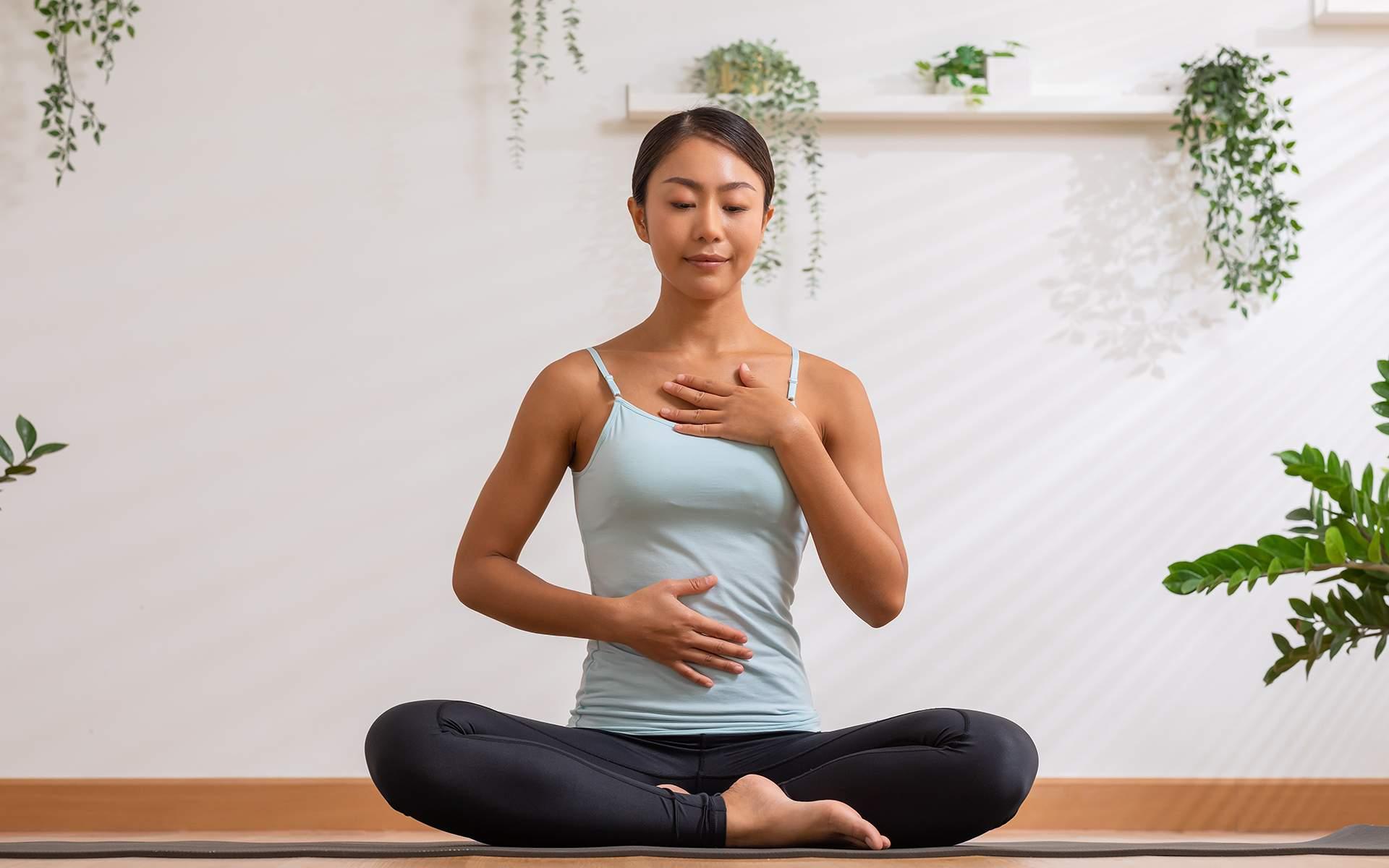The Complete Ultimate Guide to Meditation: Types, Techniques, Benefits, and How to Meditate Every Day

Discover how to meditate with this complete guide covering types, techniques, benefits, beginner tips, and a 30-day meditation challenge for daily practice.
In this Novasvet Ultimate Guide to Meditation: Types, Techniques, Benefits, and How to Meditate Every Day

Meditation has been practiced for thousands of years, yet it has never been more relevant than it is today. In a world overflowing with notifications, pressure, and constant mental noise, meditation offers something incredibly rare:
a dependable way to calm the mind, reconnect with yourself, and build resilience from the inside out.
But with so many styles, techniques, and online guides, it’s easy to feel overwhelmed — especially if you’re just beginning.
This ultimate guide simplifies everything.
Here, you’ll understand what meditation truly is, how it works, the different types, the science-backed benefits, and how you can start a sustainable daily practice without stress or confusion.
If you’ve ever wondered:
-
How do I meditate correctly?
-
Which type of meditation is best for me?
-
Why does my mind wander so much?
-
How can I meditate every day — even when life gets busy?
You’re in the right place.
Let’s begin.
What Is Meditation? (Simple Explanation That Actually Makes Sense)
Most definitions make meditation sound complicated or mystical.
But here’s the truth:
Meditation is the practice of training your attention and awareness.
That’s it.
You’re learning to:
-
notice what’s happening inside you,
-
calm your mind,
-
stay centered,
-
and respond instead of reacting.
Meditation is not about “emptying your mind,” stopping thoughts, or achieving perfection.
It’s simply about observing, breathing, and returning to the present moment, gently and consistently.
Why Meditation Works: The Science Explained Simply
Meditation affects both the mind and the body, and research from institutions like Harvard, Stanford, and Oxford consistently shows the same results.
1. Meditation restructures the brain.
It strengthens areas responsible for:
-
focus
-
memory
-
emotional regulation
And it shrinks the amygdala — the brain’s fear and stress center.
2. Meditation reduces stress hormones.
Cortisol levels drop when you meditate, helping you feel calmer and more grounded.
3. It improves emotional awareness.
You become better at recognizing your feelings before they overwhelm you.
4. It enhances overall well-being.
People who meditate regularly report:
-
better sleep
-
improved mood
-
more self-control
The science is clear:
Meditation changes the brain, and those changes improve your life.

Common Myths About Meditation (And the Truth)
Before we go further, let’s clear up some misunderstandings:
Myth 1: “I can’t meditate because my mind won’t stop.”
Truth: Everyone’s mind wanders. Meditation is the practice of gently returning your attention.
Myth 2: “Meditation is religious.”
Truth: Meditation is a mental training method. Many traditions use it, but meditation itself is neutral.
Myth 3: “I need a quiet room, candles, or special music.”
Truth: You need nothing except your breath.
Myth 4: “Meditation takes too long.”
Truth: Even 5 minutes a day creates real change.
Myth 5: “Meditation is about feeling good instantly.”
Truth: Sometimes it’s peaceful; other times it reveals emotions you’ve been avoiding.
Both are part of the healing process.
How to Meditate: Step-by-Step Guide for Beginners
This is the simplest, most reliable way to start.
Step 1: Choose your position
You can sit on a chair, the floor, a cushion, or even lie down.
The key is:
✔ back straight
✔ body relaxed
✔ not tense, not stiff
Step 2: Set a timer
Begin with 5 minutes.
As it becomes easier, you can move to 10, 15, or 20 minutes.
Step 3: Close your eyes or soften your gaze
You don’t need to squeeze them shut — just relax.
Step 4: Bring your attention to your breath
Notice:
-
the cool air entering,
-
the warm air leaving,
-
the rise and fall of your chest or belly.
Step 5: Your mind will wander — this is normal
When you notice you’re thinking:
gently return to the breath.
This gentle return is the real meditation.
Step 6: End slowly
Open your eyes.
Take one deep breath.
Notice how you feel.
You just meditated.

Types of Meditation (Explained Clearly So You Can Choose the Right One)
There are many meditation styles, but the ones below are the most practical and widely used.
1. Mindfulness Meditation
This is the most researched and beginner-friendly style.
You observe your:
-
breath
-
thoughts
-
emotions
-
sensations
…without judgment.
Best for:
✔ Stress reduction
✔ Emotional balance
✔ Beginners
2. Focused-Attention Meditation
You choose one object to focus on, such as:
-
breath
-
candle flame
-
sound
-
body sensation
Whenever your mind drifts, bring it back.
Best for:
✔ Improving concentration
✔ ADHD-friendly
✔ Mental clarity
3. Body Scan Meditation
You mentally scan your body from head to toe, noticing sensations.
Best for:
✔ Relaxation
✔ Sleep
✔ Releasing tension
4. Mantra Meditation
You silently repeat a word or phrase such as:
-
“peace”
-
“I am calm”
-
“Om”
Best for:
✔ Deep focus
✔ Quieting the mind
✔ Spiritual grounding
5. Loving-Kindness Meditation (Metta)
You send well-wishes to yourself and others.
Best for:
✔ Healing emotional pain
✔ Reducing anger
✔ Increasing compassion
6. Visualization Meditation
You imagine a calming scene (e.g., ocean, forest) or visualize your best self.
Best for:
✔ Creativity
✔ Self-confidence
✔ Stress relief
7. Zen Meditation (Zazen)
Buddhist-style seated meditation focused on posture and awareness.
Best for:
✔ Discipline
✔ Deep stillness
✔ Long-term practitioners
8. Movement Meditation
Includes:
-
walking meditation
-
tai chi
Best for:
✔ People who prefer physical activity
✔ Mind-body connection
✔ Reducing restlessness
9. Advanced Meditation Techniques
For later, once you’re comfortable:
-
breath retention
-
extended silent sits
-
non-dual awareness
-
deep concentration states
These require experience and guidance.

Benefits of Meditation (Short-Term & Long-Term)
Meditation affects almost every part of life.
Short-Term Benefits
-
reduced stress
-
calmer mood
-
improved focus
-
clearer thinking
-
better sleep
-
more patience
Long-Term Benefits
-
increased emotional control
-
lower anxiety
-
stable mind under pressure
-
greater resilience
-
deeper self-awareness
-
enhanced creativity
-
long-lasting happiness and contentment
Meditation is not a quick fix — it’s a life skill that gets stronger the more you use it.
How to Build a Daily Meditation Habit (Even If You’re Busy)
1. Start small
5 minutes is enough.
2. Choose the same time every day
Morning works best, but anytime is fine.
3. Tie meditation to an existing habit
Example: after brushing your teeth.
4. Remove friction
Have your spot ready — a chair, corner, or cushion.
5. Track your consistency
Use a simple checklist or app.
6. Celebrate progress
Even 3 days in a row is a win.
7. Be kind to yourself
Missing a day doesn’t mean you’re failing.
30-Day Meditation Challenge (Your Beginner-to-Advanced Pathway)
This program helps you progress safely, calmly, and confidently.
Week 1: Build Consistency (5 minutes/day)
Day 1–7:
-
5 minutes mindfulness breathing
-
Focus on: just showing up
Goal: Learn to sit, breathe, and stay present.
Week 2: Deepen Awareness (8–10 minutes/day)
Day 8–14:
-
Introduce body scan meditation
-
Notice sensations without reacting
-
End with 3 minutes of mindful breathing
Goal: Strengthen mind-body connection.
Week 3: Emotional Balance & Focus (10–12 minutes/day)
Day 15–21:
-
Alternate between:
-
loving-kindness meditation
-
focused-attention meditation
-
Goal: Improve emotional regulation.
Week 4: Build a Personalized Practice (12–15 minutes/day)
Day 22–30:
Choose based on your preference:
-
breath-focused
-
mantra
-
movement meditation
Goal: Create a routine you can maintain long-term.
End-of-Challenge Reflection
-
What changed in your mood?
-
Do you feel calmer or clearer?
-
Which style resonated?
This helps lock in your long-term practice.

Common Meditation Challenges & How to Fix Them
1. “My mind won’t stop.”
Your mind is doing what minds do.
Gently return to the breath — again and again.
2. “I feel restless.”
Use walking meditation or shorter sessions.
3. “I feel sleepy.”
Try upright posture and morning sessions.
4. “I don’t see results yet.”
Meditation works gradually, like training a muscle.
5. “I can’t find time.”
Meditate:
-
right after waking up,
-
right before bed,
-
or during short breaks.
Even 3 minutes counts.
Advanced Tips to Take Your Meditation Deeper
1. Extend your sessions
Move slowly from 5 → 10 → 15 → 20 minutes.
2. Try longer silence periods
Once a week, do a 15–20 minute silent session.
3. Explore advanced breathwork
Only when experienced and comfortable.
4. Meditate at different times
Morning for clarity; night for calm.
5. Use micro-meditations
10 seconds of mindful breathing during the day.
Final Thoughts: Meditation is a Journey, Not a Destination
Meditation is not about perfection.
It’s about paying attention, staying curious, and returning — over and over again.
Whether you want:
-
mental clarity
-
emotional balance
-
or a calmer life
Meditation gives you a path to all of it.
Start small.
Stay consistent.
Let the practice grow with you.
Your mind will thank you — not just today, but for the rest of your life.





